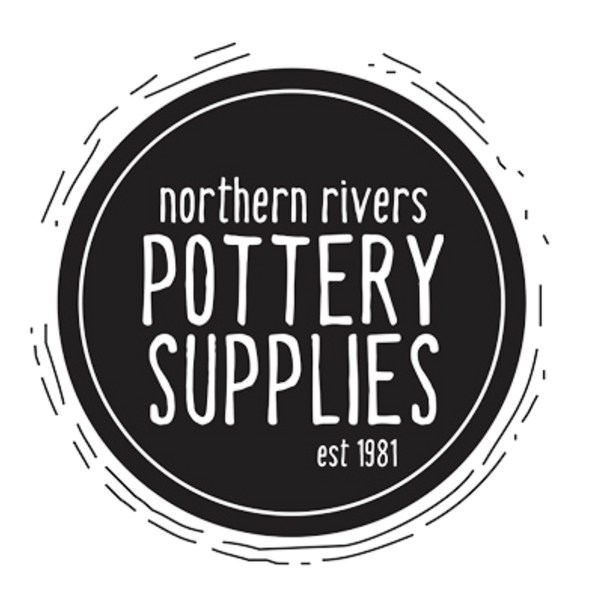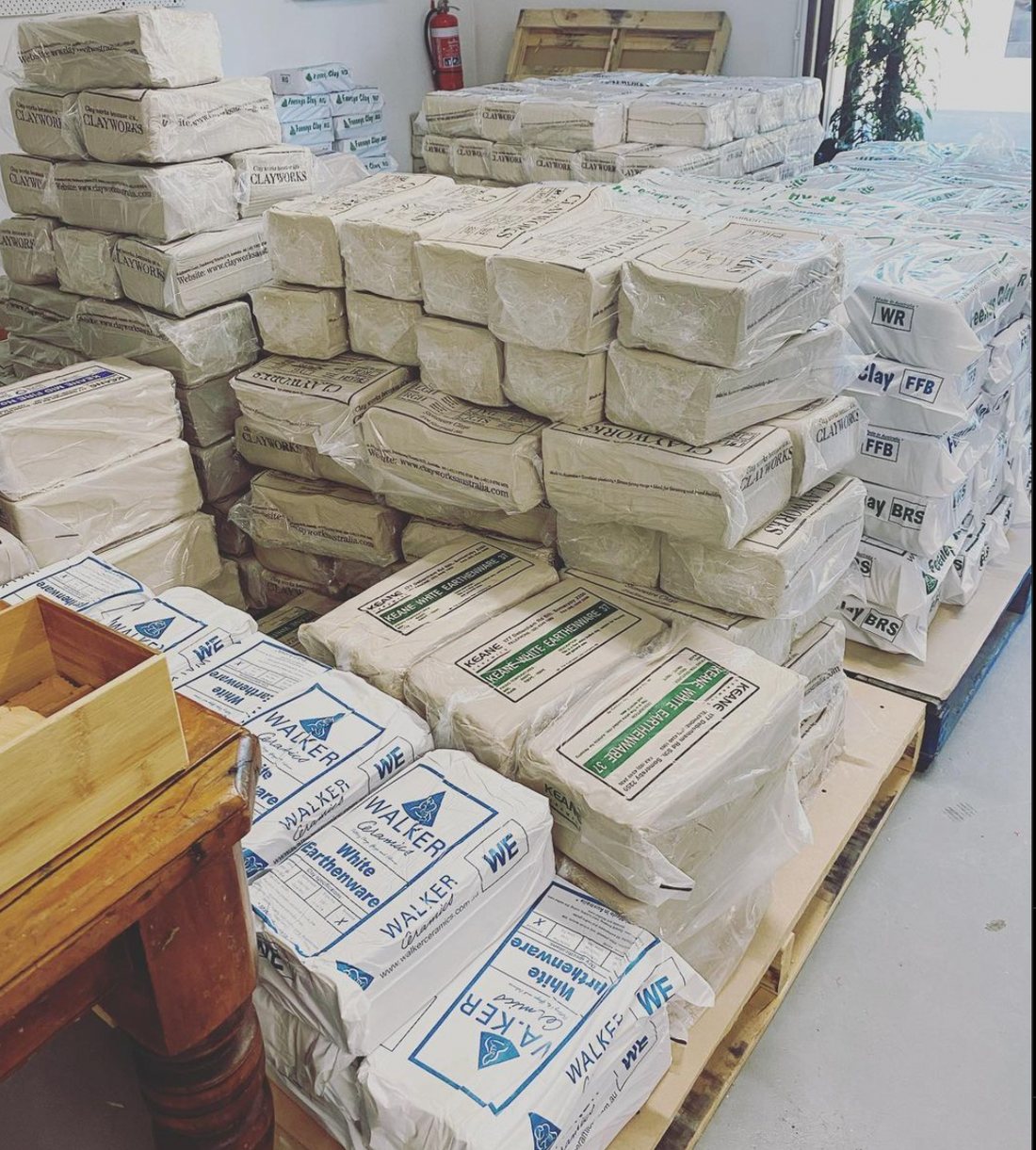Choosing the right clay for your work can be overwhelming, here is a break down of the different clay bodies and how to get the best results from each.
BEFORE YOU BEGIN
Before you make a large body of work it is important to plan and test first. Think about what glazes you might want to use, where you are firing it and if you need to choose clay for a specific firing temperature and consider what aesthetic qualities you are going for. Finally consider the results you are looking for and how you want the pieces to function. These factors will impact on your choice.
Clay is an organic matter and as such is prone to change depending on the source or availability of certain minerals. However most commercial clays offer a standard of reliability and predictability and can be used with confidence of achieving consistent results most of the time. There are a huge variety of clays for different effects and purposes.
To help you chose the perfect clay for you, consider each of the following questions.
1. WHAT FIRING RANGE?
As covered in Firing in an electric kiln for beginners, there are three different firing temperatures for glaze firing, you must put your work in the correct temperature for you clay. Both the clay you use and the glaze must be fired at the correct temperature.
If you over fire your clay it can bloat or melt destroying your work (and the kiln shelves) and if you under fire it will not vitrify as it should.
When you buy your clay the temperature will be listed on the bag, this will be:
Earthenware
Earthenware is the lowest firing range. Cone 06 - 03, 1000 - 1100 degrees celsius.
Earthenware clay is a popular choice for many schools and pottery studios, it is often used for sculptural work. The lower firing temperature means that you can use a range of bright bold colours that burn out in higher temperatures, making it popular clay for using underglaze or coloured slips on. The lower temperature is also better for kilns and easier on the elements. The downside of earthenware clay is that it is less dense and vitrified and therefore less strong and more prone to chipping and mould. It must be glazed to make it water proof.
Some popular earthenware clays include Keanes terracotta and red terracotta, Clayworks earthenware, Keane No. 37/ no. 37 grogged and Walkers Earthenware.
Midfire
Mid fire clay should be fired at cone 5 - cone 6, 1186 - 1222 degrees celsius.
Mid fire clay bodies are becoming increasingly popular choices for many potters, the higher firing temperature offers strength and durability whilst being lower than stoneware and better for extending the life of kiln elements. There are also a huge variety of popular mid fire glazes which offer a range of colours and effects. Many bright colours are still achievable in this higher range.
Some popular mid fire clays include: Chris's light speckle, Keanes no. 33 mid fire and mid fire warm, Clayworks cone 6 and cone 6, 30#
Stoneware/ Porcelain
Stoneware clays are fired to a cone 9 - 10, 1280 - 1300 degrees celsius.
Stoneware clays are the densest and most vitrified once fired, making them a popular choice for production potters, as it is strong and water resistant and often used for restaurant quality ceramics.
Stoneware glazes offer a variety of effects and can produce interesting, often unpredictable results. Stoneware can hold water even when it's unglazed. Porcelain clay is fired to stoneware temperatures and is silky, bright white and translucent (when thin).
Some popular stoneware clays include: Walkers no. 10, Keanes no. 33, Keanes no. 9, Keanes no. 7 and 7 speckled and Clayworks LGH
*GROGGED CLAY
Clay with grit/grog in have crushed or ground particles which give the clay more body, different grogged clays have different amounts of grog and different particle sizes of grog, from fine to course. Grogged clay can reduce shrinkage and thermal expansion and offer a textured surface appearance. This clay type is the most popular for hand building as it is generally less prone to cracking it is great at holding shape and doesn't 'slump'.
There are plastic throwing clays with grog added for extra body such as Clayworks cone 6, 30# or Keanes no. 37 grogged which must be fired to the correct firing range. Or there are many hand building/ Raku clays which can be fired to any temperature, however they are most vitrified in stoneware and vessels holding water can leak if fired lower. These clays are used in the Raku firing process because of their high thermal shock resistance.
2. WHAT METHOD ARE YOU USING?
Wheel Throwing
Clays traditionally used for wheel throwing are soft, plastic and fine. This makes it easier to form and manipulate the clay on the wheel. Smooth textures are easier on the hands to throw and finished work provides a smooth surface.
wheel throwing clays are available in all firing temperatures and a range of colours, from red to black, white and speckled. All throwing clays are different and using them will help you to identify what kind of clay body you prefer to use on the wheel. These clays can be used to hand build with, extra precaution can be taken to avoid cracking or slumping.
Grogged clay can be used to throw with, they are harder to manipulate and rougher on the hands (like sand paper) but beautiful results can be achieved by throwing grogged clays and they hold their shape well.
Hand building
Hand building with clay is increasingly popular and is used by many potters and ceramicists for it's limitless creative potential. It can require little equipment and tools, could be done anywhere and offers a range of interesting sculptural shapes and options.
Methods commonly used include coil, slab and pinching.
If you are hand building, grogged clays are ideal and the most popular choice, there are a range of different colours and levels of mesh to chose, from very fine grog such as Keanes Raku T, to very chunky like Feenys Buff Raku with Trachyte (BRT).
Plastic throwing clays can be used too if you are looking for a smoother finish but extra care must be taken to avoid cracks. Pieces should be covered in plastic to dry slowly, joins should be connected with extra care and it is best to use little water to avoid the clay becoming too wet and 'floppy'. Clay can be left to dry slightly if it is too wet. Compressing clay with a rib will smooth it and avoid cracks.
3. WHAT AESTHETIC AND SURFACE TEXTURE ARE YOU DRAWN TO?
Different clays offer different looks and feel.
Grogged clays can look more 'organic' and provide a textured surface. This rough surface offers a sandy quality to the ceramics. It is worth considering how you want the piece to feel in your hands, grogged clays can be quite rough where the surface is not glazed. Smoother clays are like stone to touch and offer a beautiful canvas for glazes. some clays have fine grog, which offers you a smooth surface but with extra body.
Porcelain clay offers a bright white and very silky surface and is translucent when it is thin.
4. WHAT COLOUR DO YOU WANT?
There are a range of coloured clays in each temperature.
If you are using underglazes to decorate your piece or you want a 'blank canvas' a white clay is often preferred. Terracotta is a popular choice for white slip and sgraffito. Speckled clays create a dynamic surface aesthetic that can give the illusion of depth and dark clay bodies offer a dramatic contrast for glazes.
Clay can also be coloured using a stain but this is an expensive method for large quantities and requires a lot of stain powder for a rich colour in clay.
The colour of the clay will impact the colour of the glaze and different clays will interact differently with your glazes.
This guide is just a starting point and experimentation is key in finding the right clay. Many of these clays can be used for several purposes and the categories can cross over, for example many potters use grogged clay to throw on the wheel with wonderful results and wheel throwing clay to hand-build.

